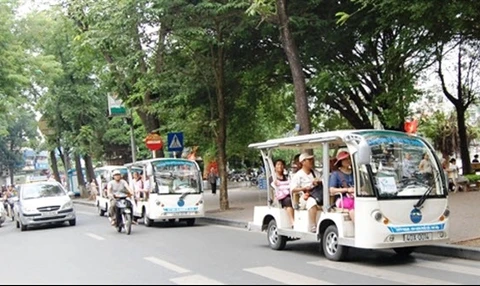Hanoi (VNA) - Thailand has become Vietnam’s leading automobile exporter in the first quarter of this year, with a volume of more than 7,800 units, a 64.5 percent increase compared with the same period last year.
Statistics from the General Department of Vietnam Customs showed Thailand was followed by the Republic Korea with 3,560 units and China with 2,260 units, a year-on-year decline of 41 percent and 58 percent, respectively.
Preferential import tax policies caused the sharp increase of cars imported from Thailand, under Vietnam’s commitments to the ASEAN Trade in Goods Agreement.
Under the agreement, the import tax on automobiles from ASEAN members – Myanmar, the Philippines, Malaysia, Thailand, Singapore, Laos, Indonesia, Cambodia, Brunei and Vietnam– would fall from 50 percent to 40 percent by 2016, to 30 percent by 2017 and zero percent by 2018.
With preferential policies on taxes, Thailand has attracted many well-known auto brand names to build production plants in the country, including Ford, Toyota, Honda and Nissan.
In car manufacturing, Thailand has reached a locally manufactured rate of between 80 percent and 90 percent. Meanwhile, the rate in Vietnam is between 20 and 40 percent.
That’s why Thailand’s vehicles are priced lower than Vietnam’s.
According to research on the prices of vehicles in Thailand, Vietnam and Indonesia issued by the Industry and Trade Ministry’s Institute for Industry Policy and Strategy last year, Yaris of Toyota was the model with the largest difference. The vehicle was 29,281 USD in Vietnam, but it was 13,082 USD in Thailand and 16,153 USD in Indonesia.
Meanwhile, the Honda model City CVT was 26,878 USD in Vietnam, 48 percent and 26 percent higher than in Thailand and Indonesia, respectively.
The price of the Fiesta Ford in Vietnam was also 63 percent and 54 percent higher than those in Thailand and Indonesia, respectively.
Of the cost for production of vehicles in Vietnam, taxes and fees occupied 40-50 percent of the value. The remainder was for vehicle production. However, the cost was 20 percent higher than that of other regional countries because Vietnam depended on 80 percent of auto parts imported from foreign countries.
Thailand has more than 2,000 auto part manufacturers. This has not only helped the country increase its local supply rate, but also helped it become the biggest hub for auto and part exports in the Southeast Asian region.
The statistics from the General Department of Vietnam Customs showed that the country imported more than 19,700 units in the first quarter of this year, a year-on-year drop of 16.8 percent. The reduction occurred in nearly all kinds of vehicles, aside from trucks.
Of the figure, there were 9,860 trucks imported, an increase of 16 percent. Meanwhile, the remainders were nearly 6,900 nine-seat cars and lower, and more than 3,000 other vehicles, a reduction of 37.6 and 45.6 percent, respectively.-VNA

























